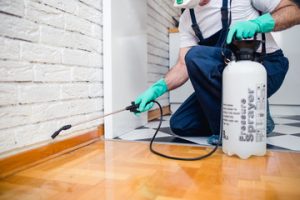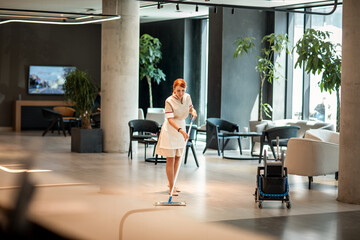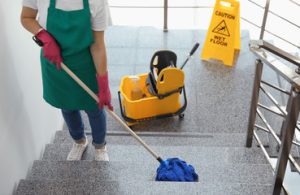
A septic system is one of the most important yet often overlooked components of a home. It quietly handles all wastewater from toilets, sinks, showers, and appliances. While it works out of sight, it still needs regular care, especially when it comes to Septic Tank Pumping Madera. Many homeowners are unsure how often this should be done or what factors influence the schedule. Failing to stay on top of pumping can lead to messy, expensive, and even hazardous problems. By understanding how your system works and recognizing the signs of trouble, you can prevent major issues and keep your septic system performing efficiently for years.
This article breaks down everything you need to know about septic tank pumping, including how often it should be done, what affects your pumping schedule, and why staying proactive matters.
Understanding How a Septic System Works
Before figuring out how often you need pumping, it helps to understand what your septic tank actually does. A typical septic system consists of two major components: the tank and the drainfield.
1. The Septic Tank
The septic tank’s job is to hold wastewater long enough to allow solids to settle at the bottom (sludge) and fats, oils, and grease to float to the top (scum). The partially clarified wastewater in the middle then flows out into the drainfield.
Over time, the sludge and scum layers build up. If not removed, they reduce the tank’s capacity and can overflow into the drainfield, causing severe damage. That is why regular pumping is essential.
2. The Drainfield
The drainfield is a network of perforated pipes buried underground. Once wastewater exits the septic tank, it enters the drainfield, where it slowly filters through the soil. A healthy drainfield allows wastewater to be treated naturally in the soil as it percolates down.
If solids from the tank reach the drainfield due to lack of pumping, the field can clog, leading to backups, sewage pooling in the yard, or system failure.
How Often Should You Pump Your Septic Tank?
The short answer is: every 3 to 5 years for most households. However, this is only a general guideline. The right pumping schedule depends on several factors unique to your home and your usage.
Below are the main elements that determine how often your septic tank needs pumping.
Factors That Influence Your Pumping Schedule
1. Size of the Septic Tank
The size of your septic tank affects how much waste it can hold before needing to be emptied.
- Small tanks (750–1,000 gallons) need to be pumped more frequently.
- Larger tanks (1,500 gallons or more) can go longer between pumping.
If you live in an older home, your tank may be smaller than what modern building standards require, meaning more frequent maintenance is necessary.
2. Number of People in the Household
The more people living in your home, the more wastewater your septic system must process.
- A family of 4 or more typically needs pumping every 2–3 years.
- A single person or couple may only need service every 5 years or so.
Guests and frequent visitors can temporarily increase water usage, which may influence the schedule as well.
3. Water Usage Habits
Your household’s lifestyle directly impacts your septic tank.
High water usage includes:
- Long showers
- Frequent laundry loads
- Running dishwashers daily
- Heavy use of garbage disposals
All these activities add strain to the system. Homes that use more water will naturally require pumping more often.
4. Garbage Disposal Use
Using a garbage disposal can significantly increase the amount of solid waste in your tank. Food particles do not break down as easily as human waste, which leads to faster sludge buildup.
If you regularly use a garbage disposal, expect to pump your tank more frequently—sometimes annually depending on tank size and usage.
5. Age and Condition of the System
Older tanks may not work as efficiently as newer models. Over time, baffles can deteriorate, and sludge may accumulate faster.
If your system is more than a decade old, regular inspections become even more important, and you may need more frequent pumping.
6. Types of Wastewater Produced
Homes that use high amounts of fats, oils, grease, or chemical cleaners may cause faster scum buildup. These materials do not break down easily in the tank and can accelerate clogs and overflow.
7. Professional Inspections
Experts can determine the thickness of the sludge and scum layers and give you a recommended pumping schedule. Regular inspections—ideally every 1 to 2 years—provide peace of mind and help avoid unexpected issues.
Signs That Your Septic Tank Needs Pumping
While following a recommended schedule is crucial, it’s equally important to recognize early warning signs that your tank is overdue for pumping.
1. Slow Drains
If sinks, tubs, or toilets drain slowly, it could mean your septic tank is full or that sludge is blocking the outlet.
2. Gurgling Sounds
Bubbling or gurgling noises in your plumbing are often caused by restricted flow due to a full tank.
3. Sewage Odors
Foul smells coming from drains, your yard, or near the tank area indicate waste is not breaking down properly.
4. Wet Spots or Standing Water
If the area around your drainfield becomes soggy, this may indicate that wastewater is overflowing due to a full septic tank.
5. Sewage Backups
This is the most urgent warning sign. If sewage backs up into your home, the tank may be overflowing—or the drainfield could be failing.
6. Lush, Green Grass Over the Drainfield
While it may seem like a good sign, overly green grass may suggest wastewater is leaking from the system, often due to excessive solids in the tank.
If you notice any of these signs, schedule a pumping service as soon as possible.
Why Regular Septic Tank Pumping Is Important
Many homeowners underestimate the importance of septic tank pumping until they experience a costly problem. Regular maintenance provides several essential benefits:
1. Prevents Costly Repairs
A full tank can cause sewage to back up into your home or overflow into the drainfield. Repairing a drainfield can cost thousands, while pumping is relatively inexpensive.
2. Extends the Life of Your Septic System
Removing solids regularly reduces wear on your system and helps prevent premature failure. With proper care, a septic system can last 20 to 40 years or more.
3. Improves System Efficiency
A clean tank allows wastewater to flow smoothly, preventing clogs and reducing stress on pipes and the drainfield.
4. Reduces Health and Environmental Risks
Overflowing waste can contaminate nearby soil and water sources. Pumping helps protect the environment and keep your household safe from exposure to harmful bacteria.
5. Maintains Household Comfort
Septic issues create unpleasant odors and cause major inconvenience. Regular pumping keeps everything running smoothly so you can enjoy a clean, functional home.
How Septic Tank Pumping Works
Understanding the pumping process can help you prepare and know what to expect.
1. Locating the Tank
A technician will find the tank, expose the lid, and check its condition.
2. Measuring Sludge and Scum
Before pumping, they will measure the waste layers to determine how full the tank is.
3. Pumping Out Waste
A high-powered vacuum removes all solids and liquids from the tank.
4. Cleaning and Inspection
After pumping, the technician may:
- Rinse the tank
- Inspect the walls, baffles, and filters
- Check for cracks or other issues
5. Final Assessment
You’ll receive recommendations on repairs or adjustments to improve performance and guidance on your next pumping schedule.
Tips to Reduce Pumping Frequency
While pumping is unavoidable, you can take steps to reduce how often it’s needed:
- Fix leaky faucets and toilets to reduce water flow.
- Install high-efficiency toilets and appliances.
- Avoid flushing wipes, feminine products, or chemicals.
- Minimize garbage disposal use or avoid it entirely.
- Spread out laundry loads throughout the week.
- Keep heavy vehicles or equipment off the drainfield.
Good habits help lighten the load on your septic system and extend time between pumpings.
Conclusion
So, how often should you pump your septic tank? For most households, the ideal timeline is every 3 to 5 years, but this depends on tank size, number of occupants, water usage, and system condition. Staying proactive with inspections and pumping prevents backups, protects your drainfield, and saves you from costly repairs.
A well-maintained septic system works quietly and efficiently in the background—until it doesn’t. By understanding how pumping works, recognizing the signs of a full tank, and following the proper schedule, you can ensure your septic system remains healthy for decades. Regular maintenance is always cheaper—and far less stressful—than dealing with an unexpected sewage disaster.
If you’re unsure when your tank was last pumped, the safest choice is to schedule an inspection now. It’s the first step toward keeping your home and your septic system in excellent condition.


